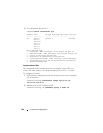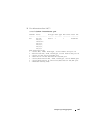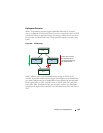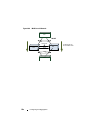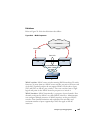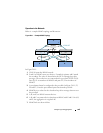
932 Configuring Link Aggregation
Multi-Switch LAG (MLAG)
Overview
In a typical L2 network, the Spanning Tree Protocol (STP) is deployed to
avoid packet storms due to loops in the network. To perform this function,
STP sets ports into either a forwarding state or a blocking state. Ports in the
blocking state do not carry traffic. In the case of a topology change, STP re-
converges to a new loop-free network and updates the port states. STP is
relatively successful mitigating packet storms in the network, but redundant
links in the network are blocked from carrying traffic by the spanning tree
protocol.
In some network deployments, redundant links between two switches are
bundled together in a Link Aggregation Group (LAG) and appear as a single
link in the spanning tree topology. The advantage is that all LAG member
links can be in the forwarding state and a link failure can be recovered in
milliseconds. This allows the bandwidth on the redundant links to be utilized.
However, LAGs are limited to connecting multiple links between two partner
switches, which leaves the switch as a single point of failure in the topology.
Dell Networking MLAG extends the LAG bandwidth advantage across
multiple Dell Networking switches connected to a LAG partner device. The
LAG partner device is oblivious to the fact that it is connected over a LAG to
two peer Dell Networking switches - instead, the two switches appear as a
single switch to the partner. All links can carry data traffic across a physically
diverse topology and in the case of a link or switch failure, traffic can continue
to flow with minimal disruption.









